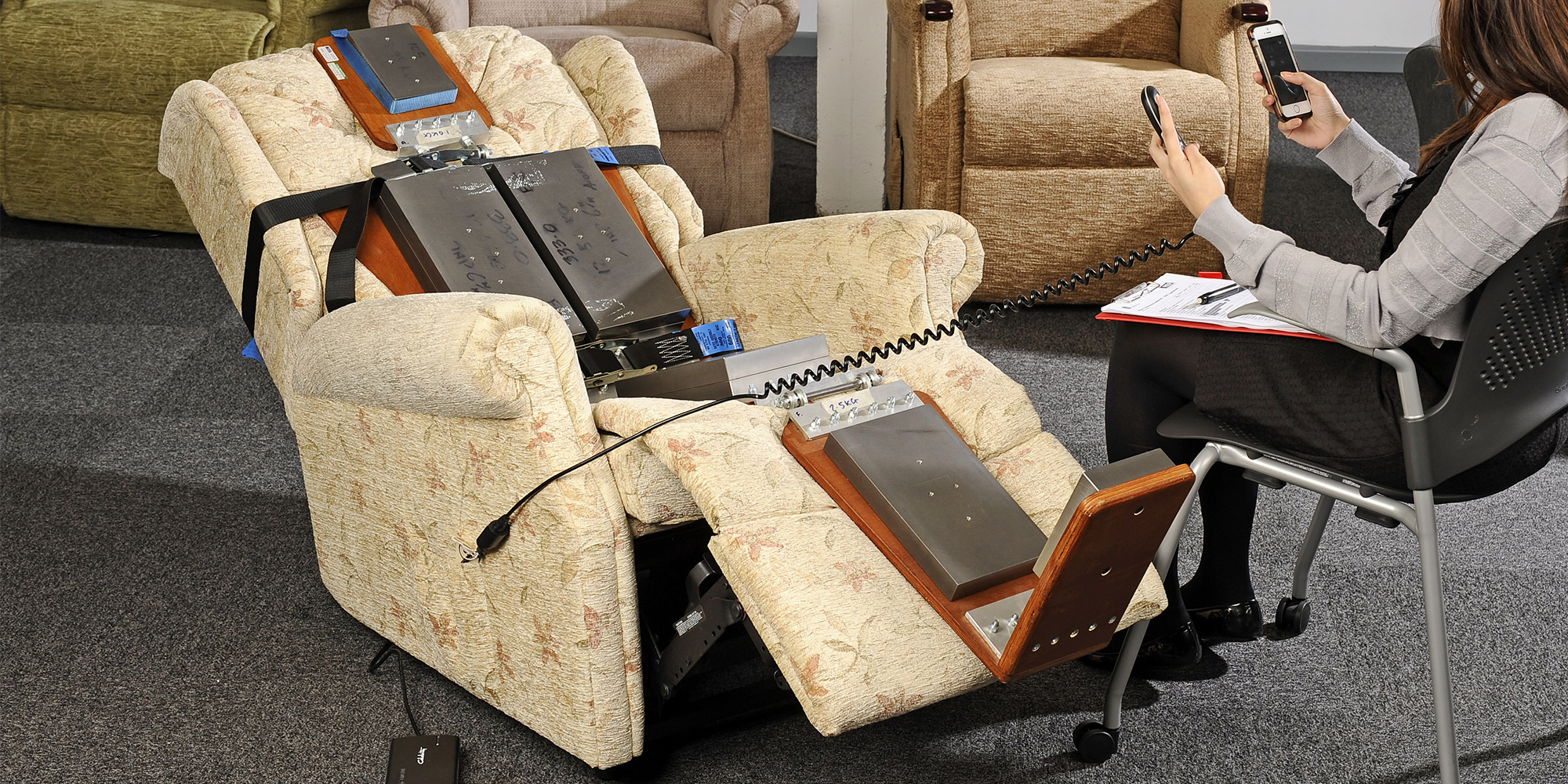ISO 4211-4 Furniture Determination of Fatigue Strength of Recliner Joints Testing
The ISO 4211-4 standard is a critical tool for manufacturers, quality managers, and compliance officers involved in the production and testing of furniture. This standard specifically addresses the determination of fatigue strength of joints used in recliners and adjustable furniture. The purpose of this service is to ensure that the components of these products can withstand repeated use without failure, thereby enhancing product reliability and safety.
The fatigue strength of a joint refers to its ability to resist cyclic loading or stress without undergoing damage or failure. In the context of recliners and other adjustable furniture, joints are subject to continuous movement, which can lead to wear and tear over time. The ISO 4211-4 standard provides a standardized method for testing these joints under conditions that simulate real-world use.
The process involves cyclic loading of the joint according to specified parameters outlined in the standard. This loading simulates the repeated stress that occurs during normal usage, such as reclining and adjusting the backrest. The test aims to determine whether the joint will fail before reaching a predefined number of cycles or under a certain amount of load.
The testing apparatus typically consists of a fatigue tester capable of applying cyclic loads in a controlled environment. Specimens are carefully prepared according to the standard, ensuring that they accurately represent the joints to be tested. The preparation process is crucial as it directly impacts the accuracy and reliability of the test results.
After testing, the specimens are inspected for any signs of damage or failure. Acceptance criteria are strictly defined within the ISO 4211-4 standard, specifying that a joint must withstand at least a certain number of cycles or loads without failing. The results of these tests provide valuable insights into the durability and quality of the joints used in recliners and adjustable furniture.
Compliance with this standard is particularly important for manufacturers who wish to ensure their products meet international quality standards. It also provides confidence to consumers that they are purchasing a product that has been rigorously tested for reliability and safety. This service not only helps manufacturers improve the quality of their products but also aids in the development of new, innovative designs.
Scope and Methodology
The scope of ISO 4211-4 encompasses the determination of fatigue strength for joints used in recliners and similar adjustable furniture. The methodology involves a series of carefully controlled tests designed to simulate real-world conditions. These tests are conducted using specialized equipment that can apply cyclic loads to the joint specimens.
- Selection of appropriate joint specimens
- Preparation of specimens according to ISO 4211-4 standards
- Cyclic loading of joints in a controlled environment
- Inspection for any signs of damage or failure after testing
- Evaluation against acceptance criteria specified in the standard
The cyclic loading process is designed to replicate the typical usage patterns of recliners and other adjustable furniture. This ensures that the test results are relevant and applicable to real-world conditions.
| Test Parameter | Description | Acceptance Criteria |
|---|---|---|
| Cyclic Load Application | Application of loads in a controlled environment | Joint must withstand at least 50,000 cycles or specified load without failure |
| Testing Environment | Controlled temperature and humidity conditions | Temperature: 23°C ± 2°C, Humidity: 50% ± 10% |
| Specimen Preparation | Cleaning and conditioning of joint specimens | Joints should be free from dirt or debris; conditioned to specified humidity levels |
The acceptance criteria are stringent, ensuring that only joints capable of withstanding repeated stress can pass the test. This helps manufacturers identify weak points in their designs and make necessary improvements.
Competitive Advantage and Market Impact
- Enhanced Product Reliability: Compliance with ISO 4211-4 ensures that products are built to last, providing a competitive edge in the market.
- Innovation Support: The standard encourages manufacturers to innovate by setting high-quality benchmarks.
- Consumer Confidence: Products that meet this standard instill confidence among consumers, leading to increased sales and brand loyalty.
The implementation of ISO 4211-4 has a significant impact on the furniture industry. By ensuring that joints are robust enough to withstand repeated use, manufacturers can extend the lifespan of their products. This not only reduces waste but also enhances customer satisfaction, as users do not have to replace products prematurely.
Compliance with this standard is essential for maintaining a competitive edge in the market. It demonstrates a commitment to quality and reliability, which are crucial factors for consumers when making purchasing decisions. Additionally, it opens doors to international markets where such standards are increasingly demanded.
Use Cases and Application Examples
- Manufacturing: Testing joints in the early stages of product development helps identify design flaws before large-scale production.
- Quality Control: Regular testing ensures that all products meet the highest quality standards, reducing the risk of defects reaching the market.
- R&D: ISO 4211-4 provides a framework for developing new materials and designs that are more durable and reliable.
| Use Case | Description |
|---|---|
| Manufacturer A | Testing joints in recliners to ensure they can withstand 50,000 cycles of use without failure. |
| Manufacturer B | Evaluating the durability of adjustable furniture joints under conditions that mimic real-world usage patterns. |
| Manufacturer C | Determining the fatigue strength of joints in office chairs to ensure they can withstand continuous use for years without failure. |
The use cases for ISO 4211-4 are diverse and cover various stages of production, from development to quality control. By adhering to this standard, manufacturers can ensure that their products meet the highest quality standards, thereby gaining a competitive advantage in the market.





